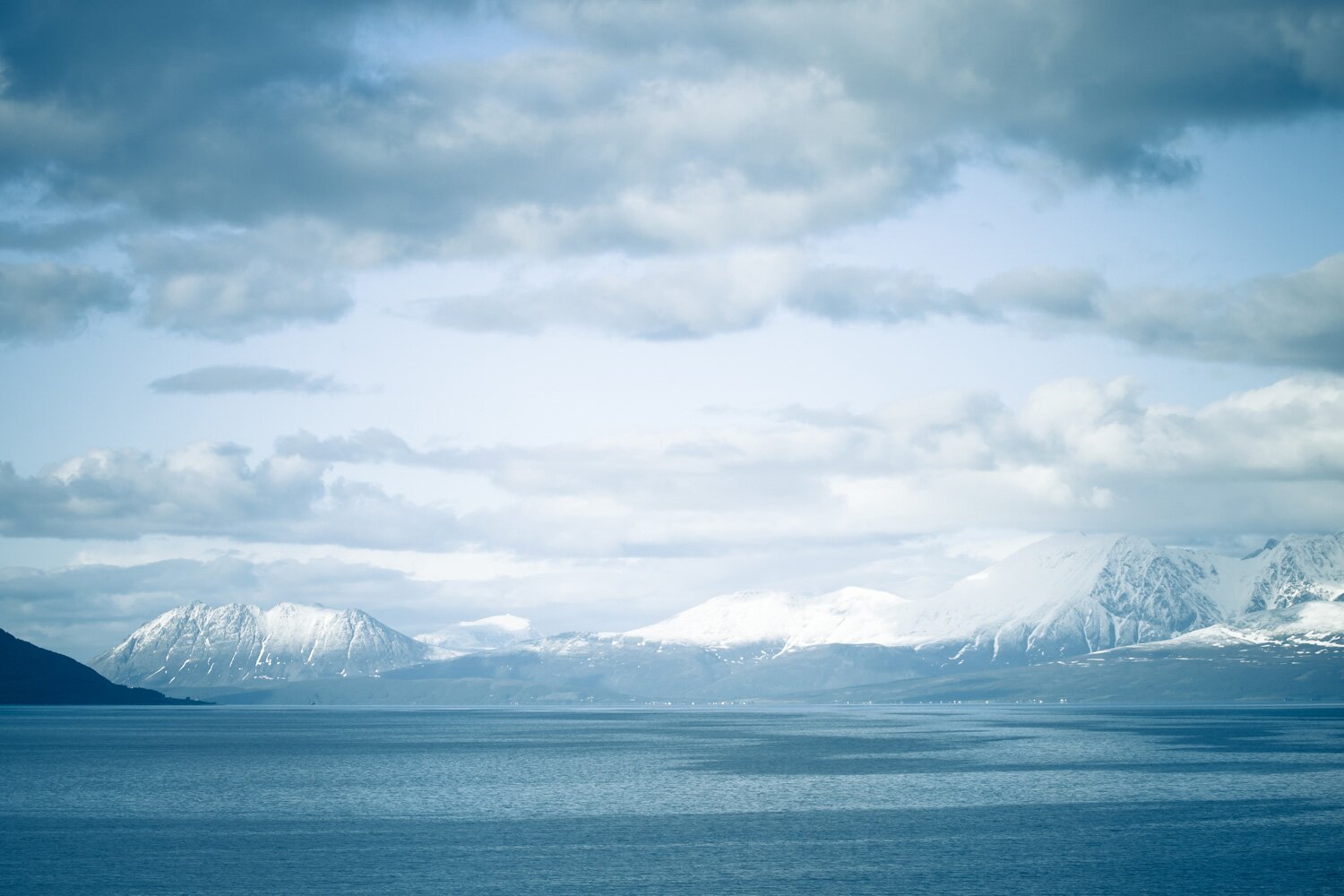Day 1: Welcome to the Arctic Circle
I am above the Arctic Circle but the landscape outside is lush. It is bursting with every nuance of green, patches of yellow, white and blue flowers sprinkled in the fields. Having flown from the city of Bodø in northern Norway, I have landed on the tiny runway of Svolvær Airport – a strip so unnervingly short one does not see land under the wheels of the plane before touching ground. It is mid-June, and I am at the first stop of my journey to the North Cape: the archipelago of Lofoten, in the Norwegian county of Nordland. It is a place of unrivalled beauty, with pointy mountaintops (some covered with a powdery lawyer of snow despite Midsummer being just around the corner), majestic fiords, and quaint fishing villages dating more than a thousand years back.
I am 1.364 km from the capital of Oslo and in the in-flight magazine I just read a gloomy article depicting how in 2020, 75 % of all Norwegians will have moved to urban areas, leaving the country’s large expanses of nature virtually desolate of people. Taking in the first sights of Lofoten, home to 24.000 people in total, it is hard to imagine anyone wanting to leave this place, though. And as Kristian Nashoug, my local guide from Destination Lofoten, reassures me when we meet outside the airport, Lofoten is in no danger of being deserted of inhabitants anytime soon. In fact, the main city of the archipelago, Svolvær, with a population of about 4.200, boasts a surprisingly large number of young families and industrious creative settlers.
“Many of those who grew up here come back to live with their families after studying in the larger cities of Norway,” Kristian tells me.
“It’s just a wonderful place to live, with a nice sense of community feeling and cosy cafes in Svolvær.”
He and his wife moved here from Oslo a little over two years ago. They now have a four-month-old son and could not imagine living elsewhere.
“Lofoten takes hold of you,” muses Kristian, an avid hiker and rock climber, on the drive to Svolvær.
Svolvær was first mentioned in writing in 1567, as Suoluer, but the city is much older – the neighbouring town of Kabelvåg, for instance, has been home to settlers since the Stone Age. The Old Norse form of the name is assumed to be Svǫlver, the first element probably being derived from svalr, which means ‘cool’ or ‘chilly’, and the last element ver, which means ‘fishing village’. The fishing industry is still big here, although the number of people engaged in tourism is beginning to rival that of those harvesting the sea. And then of course, as everywhere in Norway, there are those who work in the oil industry.
In Svolvær Kristian points to a piece of graffiti along the road. “No to the oil industry!” it exclaims in black letters. But someone has added a few words in red so that it now reads: “No to protesters against the oil industry!” The oil industry in Norway is Europe’s largest and has made many a Norwegian very, very wealthy. But some people believe that the money flow has also created an unnatural divide between rich and poor in the country that has, like its Scandinavian neighbours, always prided itself on a society based on equality.



